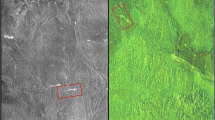Abstract
China is a country with many mountains. Mountains, plateaus, and hills account for 69% of the total area. With the increase of rainfall in July and August every year, geological disasters such as landslides and debris flows occur, and road burials and house collapses occur, resulting in economic losses. Especially in the Midwest, landslides and other geological disasters seriously threaten the lives and property of people living near the mountains. According to statistics, landslide is a serious threat to people’s lives and property safety. Therefore, the effective early warning of geological disasters such as ground slide and debris flow is the top priority. Economic development has improved people’s living standards, but the number of obese people, especially the increase in the proportion of obese teenagers, has also brought some problems. According to relevant media reports, the incidence of obesity in youth in Beijing, Shanghai, and other first tier cities has reached 21%, and the average incidence in China is close to 10%. Thirty obese college students were given moderate aerobic exercise for two semesters. The changes of body shape index, physiological index, and blood biochemical index before and after exercise were compared. The results showed that after the second semester of weight loss exercise, body mass index, body fat rate, abdominal subcutaneous fat, upper arm subcutaneous fat, scapular subcutaneous fat, fasting blood glucose, blood lipid, vital capacity, and other obese students; body mass index were improved. Aerobic exercise can effectively reduce the degree of obesity of obese students and improve body shape, physiological indexes, and blood biochemical indexes.
























Similar content being viewed by others
Change history
15 November 2021
This article has been retracted. Please see the Retraction Notice for more detail: https://doi.org/10.1007/s12517-021-08941-z
28 September 2021
An Editorial Expression of Concern to this paper has been published: https://doi.org/10.1007/s12517-021-08471-8
References
Adnan S, Khan AH, Haider S, Mahmood R (2012) Solar energy potential in Pakistan. J Ren Sust Ener 4:032701–032707
Aras H, Erdogmus S, Koc E (2004) Multi-criteria selection for a wind observation station location using analytic hierarchy process. Renew Energy 29(8):1383–1392
Basir R, Aziz N, Ahmad SS, Wahid A (2013) Satellite remote sensing for identification of solar potential sites in Pakistan. Int J Basic Appl Sci 2(2):200–209
Castillo CP, Silva FB, Lavalle C (2016) An assessment of the regional potential for solar power generation in EU-28. Energy Policy 88:86–99
Cebecauer T, Suri M (2016) Site-adaptation of satellite-based DNI and GHI time series: overview and SolarGIS approach. AIP Conference Proceedings 1734, 150002. Am Inst Phys:1–11. https://doi.org/10.1063/1.4949234
Georgiou A, Skarlatos D (2016) Optimal site selection for sitting a solar park using multi-criteria decision analysis and geographical information systems. Geosci Instr Meth Data Sys 5:321–332
Lee SK, Mogi G, Kim JW (2009) Decision support for prioritizing energy technologies against high oil prices: a fuzzy analytic hierarchy process approach. J Loss Prev Proc Indust 22(6):915–920
Mahatta R, Joshi PK, Jindal AK (2014) Solar power potential mapping in India using remote sensing inputs and environmental parameters. Renew Energy 71:255–262
Manzoor M, Tabassum F, Javaid H, Qazi JI (2015) Lucrative future of microalgal biofuels in Pakistan: a review. Int J Energy Environ Eng 6:393–403
Mirza UK, Ahmad N, Majeed T, Harijan K (2007) Wind energy development in Pakistan. Renew Sust Energ Rev 11:2179–2190
Pohekar SD, Ramachandran M (2004) Application of multi-criteria decision making to sustainable energy planning - a review. Renew Sust Energ Rev 8:365–338
Ramachandra TV, Jain R, Krishnadas G (2011) Hotspots of solar potential in India. Renew Sust Energ Rev 15:3178–3186
Riaz M, Ullah A, Jan KU (2014) Prospects and viability of solar energy in Khyber Pakhtunkhwa Pakistan. Int J Eng Res & Technol 3(8):162–167
Stokler S, Schillings C, Kraas B (2016) Solar resource assessment study for Pakistan. Renew Sust Energ Rev 58:1184–1188. https://doi.org/10.1016/j.rser.2015.12.298
Zell E, Engel-Cox J, Eckman R, Junior PS (2008) Application of satellite sensor data and models for energy management. IEEE J Selec Topic Appl Ear Obser Rem Sens 1(1):5–13. https://doi.org/10.1109/JSTARS.2008.2001142
Author information
Authors and Affiliations
Corresponding author
Ethics declarations
Conflict of interest
The author declares no competing interests.
Additional information
Responsible Editor: Sheldon Williamson
This article is part of the Topical Collection on Environment and Low Carbon Transportation
This article has been retracted. Please see the retraction notice for more detail: https://doi.org/10.1007/s12517-021-08941-z
About this article
Cite this article
Zhang, C. RETRACTED ARTICLE: Warning of regional landslide disaster based on sensors and the effect of aerobic exercise of obese students. Arab J Geosci 14, 1633 (2021). https://doi.org/10.1007/s12517-021-08034-x
Received:
Accepted:
Published:
DOI: https://doi.org/10.1007/s12517-021-08034-x




